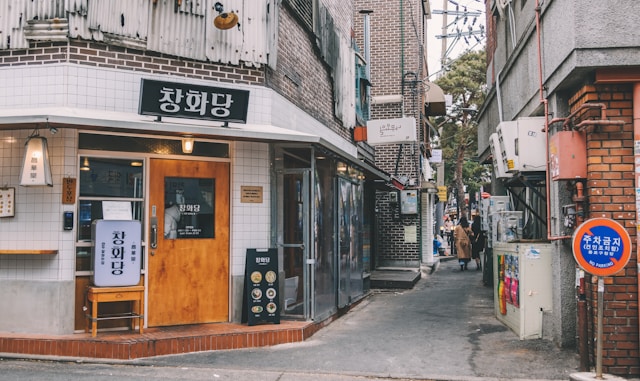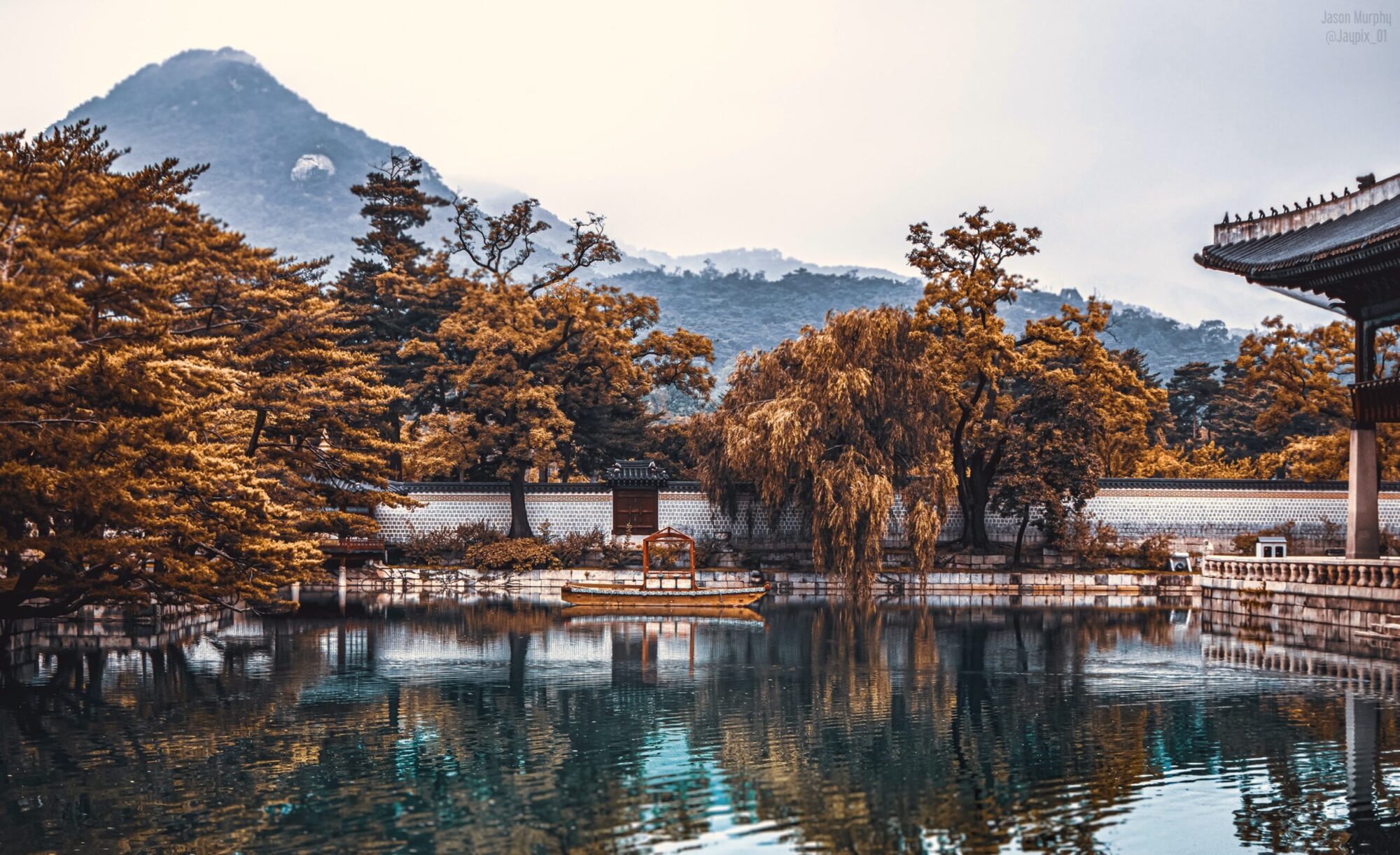South Korea has a unique culture, and it has made the country to become one of the most visited countries in the world. The charming natural beauty, its friendly people, and the delicious food of South Korea have hypnotized many people to pay a visit to this Eastern Asia country. We know the reasons why you want to go to South Korea now. So, we have this South Korea Travel Guide just for you! Read to learn more!
This is the best South Korea Travel Guide
- Basic Information about South Korea Travel
- Planning a Trip to South Korea
– When to Travel to South Korea
– Accommodation
– Transportation
– Food
– Places to Visit in South Korea - 10-Day Itinerary
Basic Information about South Korea Travel

This is essential information you need to know before traveling to South Korea.
| Currency: South Korean Won (1 KRW = 0.001 EUR) | Official Language: Korean | Plug Type: Type F |
Visa and Entry Requirements: Check if your citizenship lets you enter South Korea without a visa. If not, you must apply for a visa for your trip to South Korea.
Planning to Travel to South Korea
Before traveling to South Korea, it is very important to prepare everything beforehand, especially to budget and plan for accommodation, transportation, and food. This South Korea Travel Guide gives you essential information for your next trip to South Korea.
When to Travel to South Korea

One of the very first questions you should ask yourself about South Korea travel is, “When will I travel?” Although the country is an all-year-round destination, some time looks better than others. The best time to visit South Korea is in spring, ranging from April to early June, when you can see cherry blossom. However, you can choose to visit in another time.
Here are the summary of each season to decide the best time to visit South Korea:
- Spring (April – June): High season. The most likable season as cherry blossoms and spring flowers bloom. The temperature ranges around 15-18°C.
- Summer (July – August): Low season. The hottest temperatures in South Korea happen in this season, ranging 23-30°C. Frequent rain falls.
- Autumn (September – November): Relatively high season. Perfect to see fall foliage and enjoy seasonal harvest. Mild weather with temperatures around 19-21°C.
- Winter (December – March): Low season. Heavy snow fall and cold temperatures in January and February. Temperatures can plummet to -30°C. Great for skiing and snowboarding.
Accommodation

Choosing an accommodation in South Korea is a relatively easy thing to do. Big metropolitans like Seoul or vacation spots like Jeju Island has been designed to welcome travelers. You can find a wide range of accommodation options in these destinations.
Then, some types of accommodation you can book in South Korea are:
- Hostel
A hostel includes a room with multiple bunk beds. If you are a female traveler, you can choose an all-female room to ensure safety.
Price range: KRW 14,000 – KRW 25,000 (EUR 9 – EUR 17) - Standard Hotel
Usually a two or three star hotel. The room includes bed(s), a bathroom, table, air conditioning or heater, and amenities.
Price range: KRW 44,000 – KRW 70,000 (EUR 30 – EUR 50) - Apartment (Airbnb)
One of the most popular accommodation options. Best for group travel. You can book a studio apartment or an apartment with multiple rooms.
Price range: KRW 200,000 – KRW 300,000 (EUR 60 – EUR 200)
Transportation

Learn how you can travel from one place to another in South Korea. There are a lot of options that you can fit into your travel budget. You must notice that the price can be really low if you book in advance!
Public Transportation
All major cities in South Korea offer subway systems. The costs usually range from KRW 1,250 to KRW 1,350 (EUR 0.8 – EUR 0.9) for one way only. Besides the subway, you can also ride local buses. In South Korea, you can choose which types of local buses. They are seated (more pricey) and regular. Both of these buses run the same routes.
Bus
Taking a bus is the cheapest way to get around South Korea for a long-distance journey. Therefore, you should put the bus option in your South Korea Travel Guide. You can choose between the express bus, which makes a few to no stops, or the intercity bus, which travels between smaller areas and have more stops. We recommend you reserve the bus tickets in advance by going directly to the bus terminal since most bus booking apps or websites only accept Korean cards.
The bus ticket prices depend on the classes, which are divided into three. They are standard, luxury, and premium. To illustrate, it will cost you around KRW 36,000 to get from Seoul to Busan for four hours in a standard class. Another example, you will need to pay around KRW 38,000 from Incheon to Busan for standard class over the four-hour journey.
If you are traveling to Seoul, you can book the Discover Seoul Pass which gives free pas for 24, 48, 72, or 120 hours.
Train
Another mode of transportation that you can use to explore entire South Korea is the train. If you have more budget, you can take Korean Train Express, the fastest train in the country. However, the train only goes to major cities and has limited schedules. In addition, this could be more expensive compared to other train options.
You can take KORAIL, the national railway service that operates at a slower speed with many schedules at affordable prices. Moreover, you can buy the unlimited KORAIL Pass offered only to international visitors, which will take your money around KRW 121,000 (EUR 80) for a two-day adult pass. You can also have a five-day adult pass for KRW 210,000 (EUR 140).
Airplane
South Korea is relatively too small to explore by airplane. Therefore, many people often take land transportation instead. However, this type of transportation is highly recommended if you need to go from one place to another quickly.
Some budget-friendly domestic airlines in South Korea are Jeju Air, T’way Air, and Air Busan. The flight from Seoul to Busan will take you around KRW 30,500. Meanwhile, Jeju Island to Seoul will cost around KRW 55,000 (EUR 36). You can also fly from Busan to Jeju Island for KRW 22,000 (EUR 15) only.
Food

A meal at a restaurant serving traditional Korean food will cost around KRW 9,000 to KRW 15,000 (EUR 6 – EUR 10). Ordering a three-course meal at a mid-range restaurant will only cost around KRW 25,000 to KRW 30,000 (EUR 16 – EUR 20). However, always expect higher prices in larger cities.
If your accommodation provides a kitchen, it will be advantageous for you to save some money by cooking your own food. You only need to spend around KRW 50,000 to KRW 70,000 (EUR 33 – EUR 46) per week for vegetables, pasta, rice, and meat. Go to local markets to get fresh products at affordable prices. Otherwise, you can also buy some street foods, such as bulgogi, chap chase, tteokbokki, hotteok, bungeo-ppang, bibimpap, and many more, at a lower price.
Places to Visit in South Korea
Traveling to South Korea will be unforgettable once you land on these destinations. Here are four best places to visit in South Korea to check out.
Seoul
No South Korea travel itinerary is complete without Seoul. The large metropolis harmonizes futuristic advancement with centuries-old culture. You can find twinkling skyscrapers and gorgeous modern architectural structures in Seoul. On the other hand, traditional palaces and remarkable Buddhist temples scatter around the city. Moreover, it is the heart of pop culture. If you are a KPop or Korean Drama fan, you would not want to miss the streets of Gangnam and Myeongdong.
Jeju Island
Recognized as one of the New Seven Wonders of the World, Jeju Island is incredibly beautiful. The volcanic island comprises powdery beaches, dramatic volcanic cliffs, lush pine forests, and winding trails. Moreover, don’t miss trying fresh seafood cooked in traditional Korean flavors. They are collected by 60-years-old female divers called hanyeo, which makes Jeju Island really special. It is one of the best places to visit in South Korea.
Gyeongju
This town is an open-air museum boasting cultural artifacts dating back to the Silla Kingdom period. It is the capital of the renowned dynasty, making the city shrouded in traditional buildings and palaces. Gyeongju is a must-visit UNESCO Heritage Site in South Korea. You can learn about Korean history by visiting palaces, temples, tombs, and museums.
Seoraksan National Park
Seoraksan National Park is one of the best places to visit in South Korea, renowned for its stunning natural beauty and diverse wildlife. Located in the northeast part of the country, it boasts majestic peaks, lush forests, and crystal-clear streams, making it a paradise for hikers and nature enthusiasts. The park’s most famous peak, Daecheongbong, offers breathtaking views, especially during sunrise. You can explore ancient temples like Sinheungsa, marvel at the dramatic rock formations, or relax in the soothing waters of Osaek Hot Springs.
10-Day Itinerary
Do you want to experience South Korea in just ten days fully? This itinerary will cover some of the best places to visit in South Korea, including Seoul, Jeju Island, and Busan. Also, we add a visit to the DMZ border to enhance the unforgettable experience.
Day 1-3: Seoul
Welcome to South Korea! You land at Incheon International Airport, one hour away from Seoul. You can take a train, taxi, or shuttle bus to get to Seoul. Then, the adventure in the charming capital finally starts!
Seoul is about fun and glam. You can visit night markets and hunt for street food, go cafe-hopping, and shop ’till you drop. Here are the break down of three days in Seoul:
- Day 1: Modern Seoul
Enjoy the lively streets of Hongdae, which is famous for its pop culture and shopping scene. Head to the Namsan Tower, a viewpoint that gives you a 360-degree view of Seoul. You can also go cafe-hopping during the day and immerse yourself in the nightlife as the sun goes down. - Day 2: Historical Seoul
Wake up early in the morning and head to Bukchon Hanok Village. It is a traditional village dating back to the Joseon period. You can learn about Korean culture and wear traditional clothing called hanbok. Then, see historical sites like Gyeongbokgung Palace and Gwajang. - Day 3: Cultural Seoul
Explore Seoul’s art scene and pop culture. Visit the National Museum of Korea, National Folk Museum of Korea, and MMCA. You can also include a short hiking trip along Seoul’s popular trail Ingwansan. Then, you can visit Gangnam for some shopping and Itaewon for nightlife.
Where to stay in Seoul: Myeongdong (Seoul’s shopping district and city center), Itaewon (travelers’ hub), Hongdae (young and lively crowd), and Gangnam (luxury center)
How to get there: Airplane (flying from your home country)
Day 4: Demilitarized Zone
Day 5: Gyeongju
Take a day trip from Seoul to Gyeongju for cultural immersion in your South Korea travel itinerary. Gyeongju has a lot of archaeological sites and cultural properties dating back to its establishment in 935 AD by King Taejo. Because of that fact, many people often call Gyeongju “the museum without walls.” You can visit the famous Daereungwon Tomb Complex, see artifcats in Gyeongju National Museum, visit Donggung Palace, and wander around Gyochon Traditional Village.
Where to stay in Gyeongju: Stay in your accommodation in Seoul
How to get there: Airplane (flying from your home country)
Day 6-8: Jeju Island

After being satisfied with visiting Busan, go to Jeju Island for your next trip in South Korea Travel Guide. Jeju Island is famous for its sandy beaches and emerald water. However, Hallasan Mountain, the tallest mountain in Korea, is located on the island, making it the best place to hike around or enjoy the volcanic beauty, such as small volcanic edifices and lava tube caves. Besides, you can visit many other tourist attractions, such as theme parks, zoos, and food markets.
Things to do on Jeju Island: enjoy BBQ food at Heuk-Dwaeji Street, explore Jeju’s Mazeland, uncover lava tubes in Manjanggul Cave, dive into the seas with the Jeju Female Divers, adore the Sunrise at Seongsan Peak, stroll along the Seopjikoji Coastal Walk, learn marine life at Aqua Planet Jeju, catch the sunset at Yongmeori Coast, visit the unique Jeongbang Waterfall, enjoy street food at Seogwipo Maeil Olle Market, explore the Jusangjeollidae Lava Cliff, and hike to the Mount Hallasan.
Day 9-10: Incheon

Take a flight from Jeju Island to the last city of your journey, Incheon, in this South Korea Travel Guide before you return to your home country. Not only is Incheon home to the busiest international airport in South Korea, but it is also one of the busiest seaports in the country. With its modernity, the city still has its Korean dashes. Many places in Incheon are historical places that tourists often visit. You can also enjoy the city’s beautiful west coast and many islands.
Things to do in Incheon: explore the Fairytale Village of Songwol-dong, discover Incheon Chinatown, visit Sinpo International Market, go to the Incheon Grand Park, adore the Incheon Korean Jeondeungsa Temple, relax at the Euwangni beach, explore Ganghwa Island, and visit Incheon Metropolitan City Museum.
We have provided you with this South Korea Travel Guide. Now, it is time for you to explore and realize your dream vacation to South Korea! Book an unforgettable trip with JoinMyTrip to South Korea, and enjoy the best vacation of your life with our fun, experienced TripLeaders to take you on a fantastic adventure. So, what are you waiting for? Book now!

